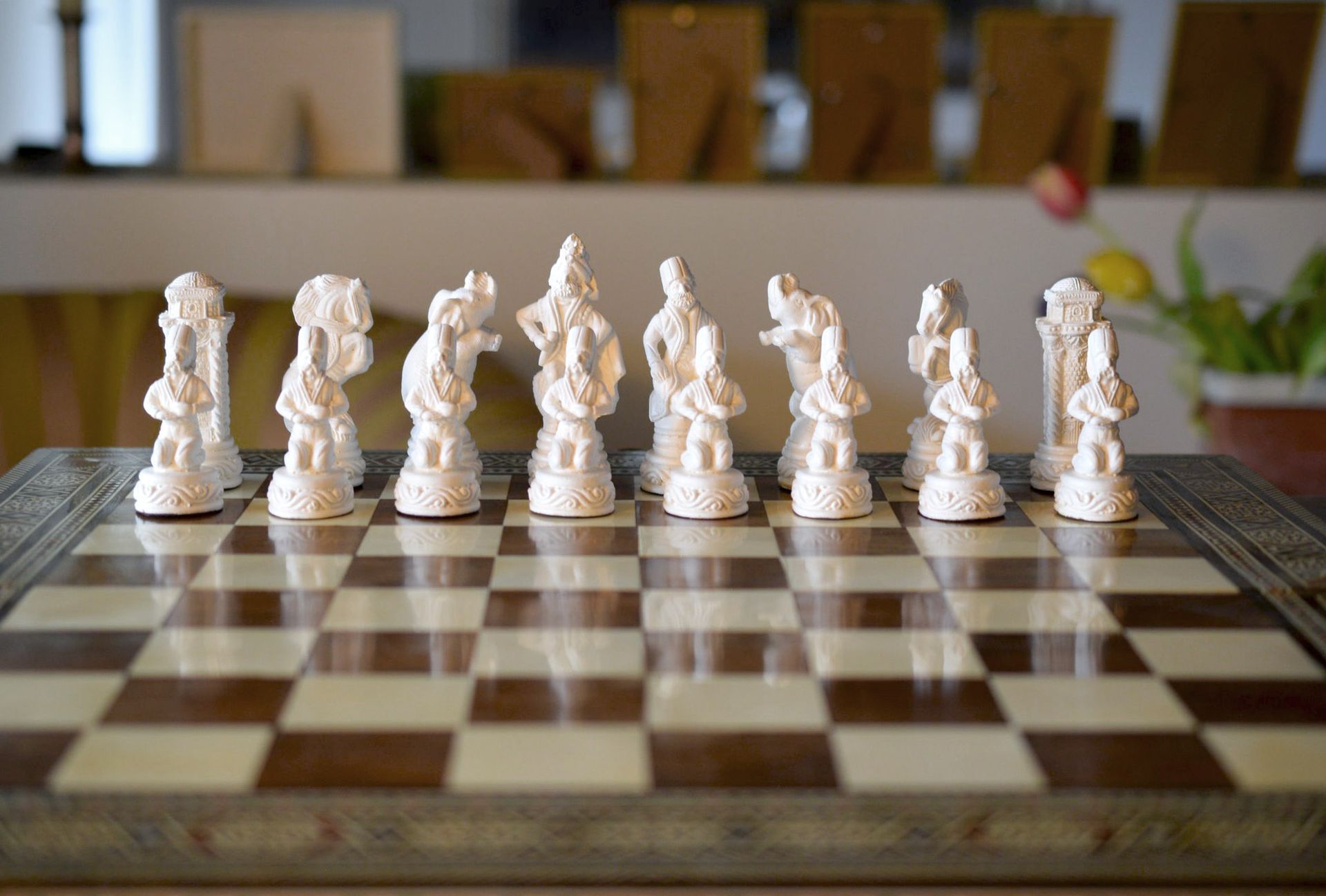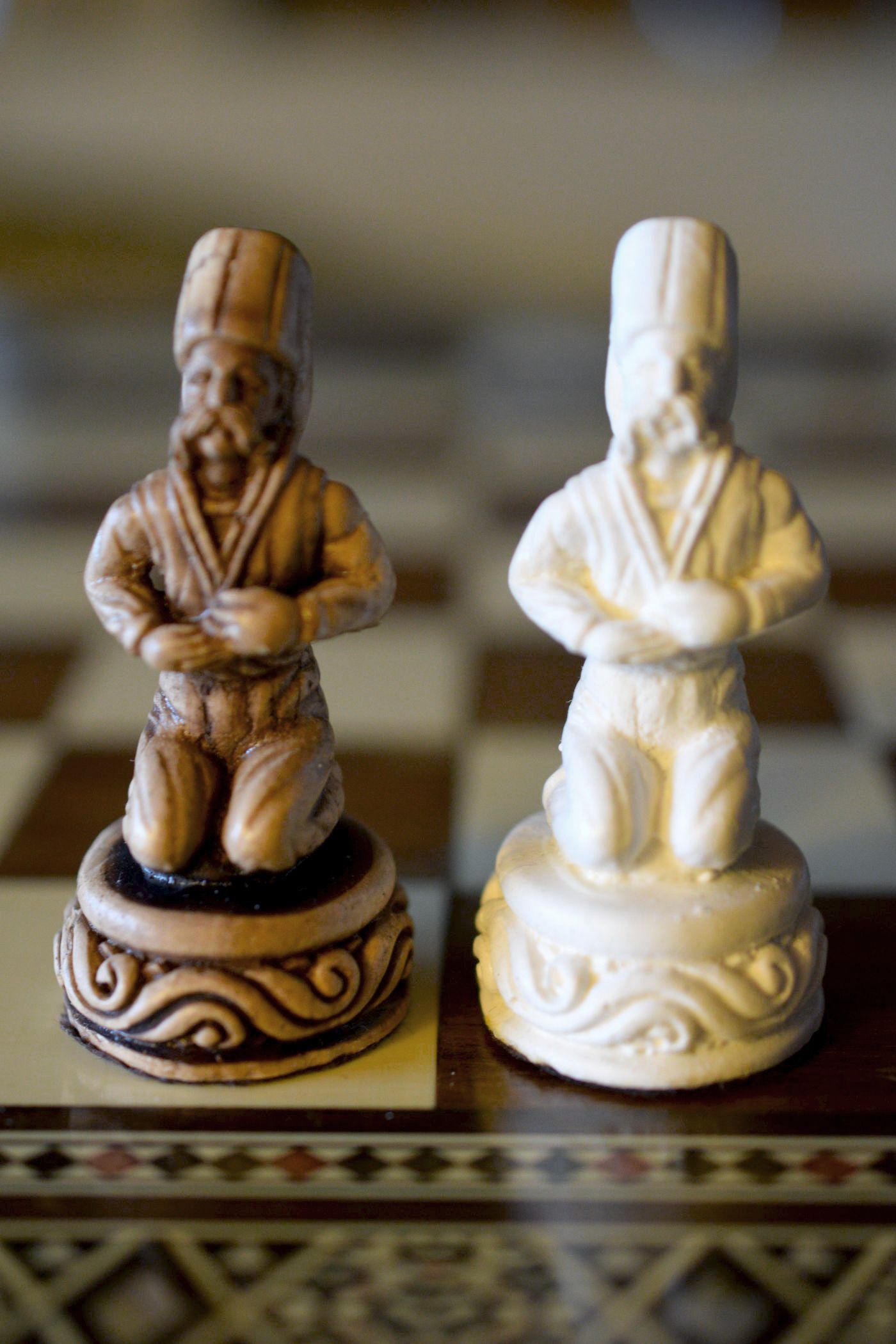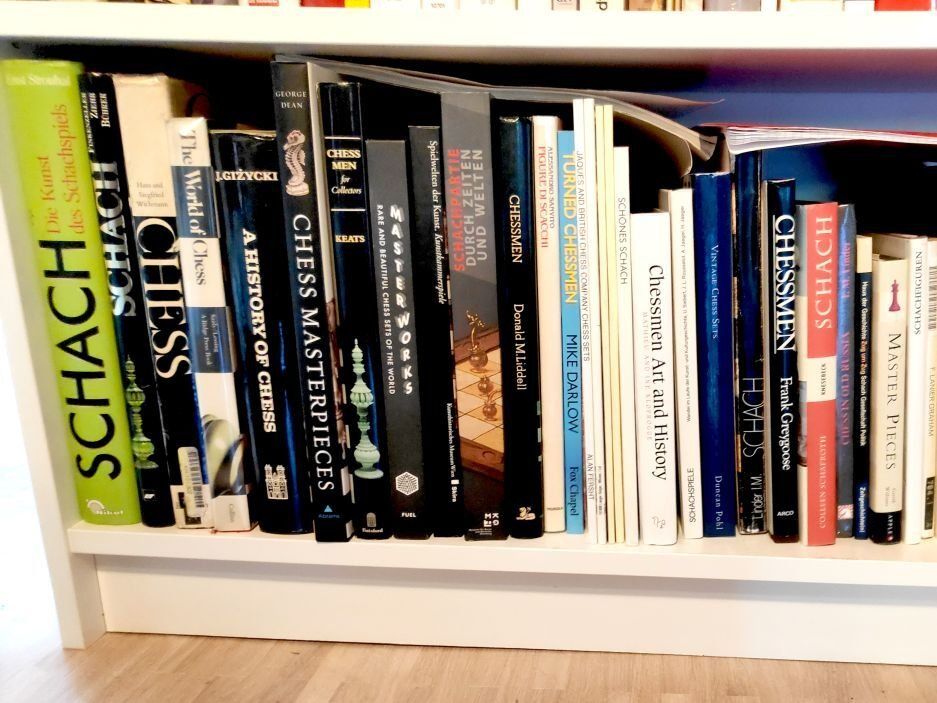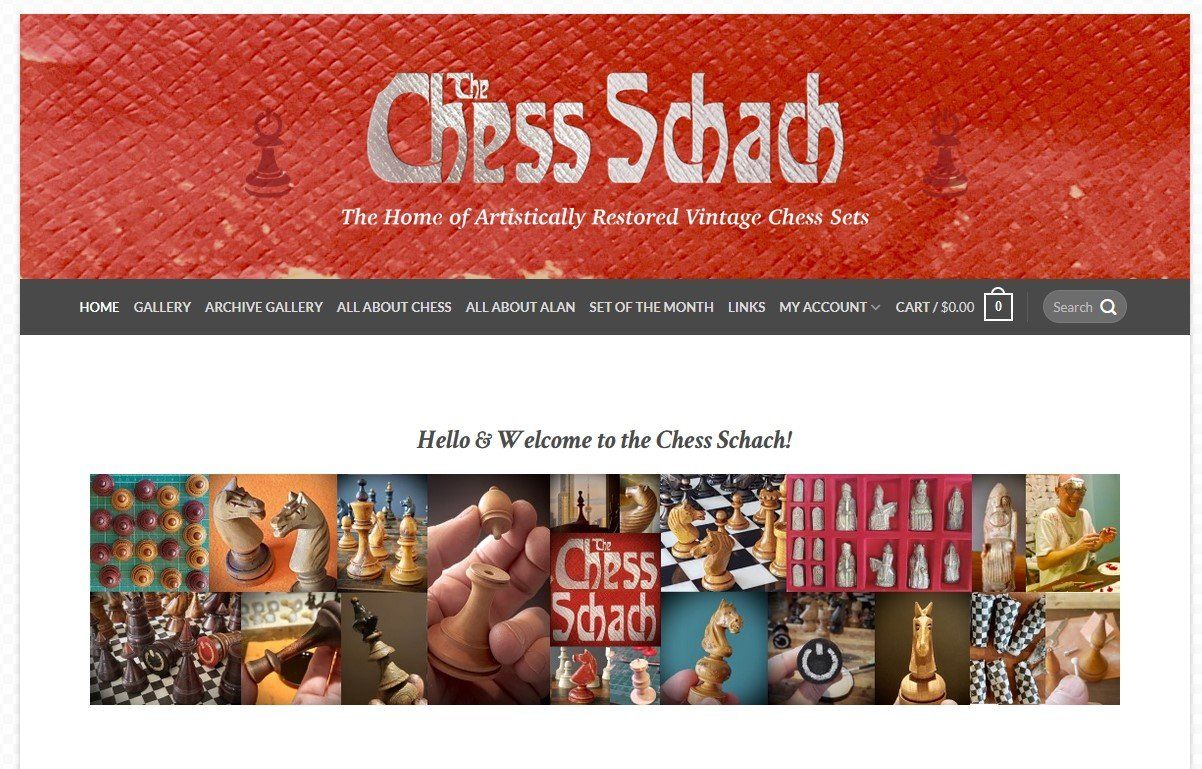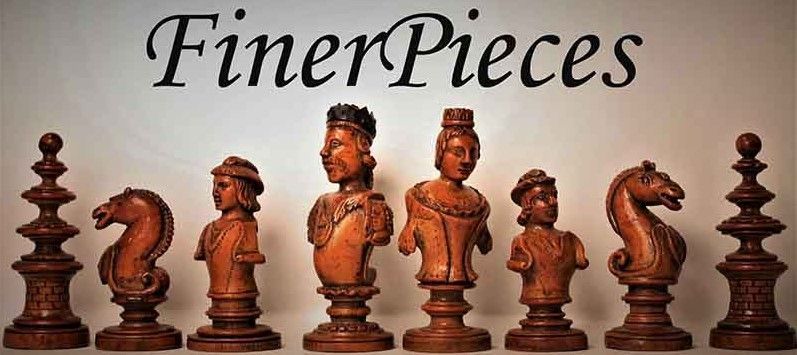Turkish Chess Set, second half of the 20th century
A Turkish figural set made of meerschaum, one side natural, i.e. light white, and the other side stained in a light brown tone. The king is depicted as an oriental ruler with a turban. The queen is depicted as the ruler's vizier. The bishops are depicted in the form of a kneeling elephant with raised trunk, the knights as a rearing horse. The rooks with masonry and spiral corner pillars. The pawns as kneeling subjects with fez. The king size is 10 cm.
Since meerschaum can be worked well, there are numerous carvers in Turkey who produce very fine works from this material, including ornamental chess sets. Albeit not truly common, such sets are rarely valuable compared to other figural sets, but have an attractiveness all of their own and can be acquired for reasonable prices.
Meerschaum is a mineral similar to alabaster, also known as sepiolite. Chemically, it is a magnesium silicate that belongs to the class of phyllosilicates. It is formed by the hydrothermal transformation of serpentinite. Sepiolite has a relatively low density of approx. 2.26 g/cm³ for minerals, but is also very porous, which is why it contains a lot of air (similar to pumice).
Meerschaum is found in numerous places around the world, but only in large quantities in a few locations. The best-known deposit, which is also the source of most products made from meerschaum, is the province of Eskişehir in the Anatolian part of Turkey. Meerschaum, called Lületaş in the local language, has been mined there since the early 18th century from deposits up to 150m underground. Mining is done in blocks, which is why the meerschaum from there is also called block meerschaum. It is extremely light and has a very white, sometimes slightly pinkish or yellowish colour. Other larger deposits are found in the Amboseli Basin in Tanzania, which is why the material extracted there is also called Amboseli meerschaum, but it is considered to be of poorer quality because it is heavier and of a rather grey colour. In addition, there is a kind of "second hand" meerschaum, the massamer meerschaum or pressed meerschaum, which is obtained from the remains of the processing of block meerschaum by washing, grinding and mixing it with lime and binder and drying it. The material obtained in this way can then be used again to cut blocks for further processing, but these have a much lower degree of purity because of the lime and binder.
When wet, meerschaum is easy to shape and work with, but when dry it is hard and extremely heat-resistant , making it particularly popular in pipe production. Pipe bowls made of meerschaum are - unlike pipe bowls made of wood - not only resistant to excessive heating, but also act as a natural filter due to the porosity of the raw material.
According to legend, the name "meerschaum" (sea foam) is derived from the strong porosity and the associated low weight, which makes meerschaum lighter than water in some cases, the literal translation of the Latin term "spuma maris". This was coined in 1788 by Abraham Gottlob Werner, according to whom it was initially assumed that the white sepiolite floating on the water surface was hardened spray. However, this is probably a (persistent) rumour, because according to other sources, the name goes back to the supply of Austrian pipe manufacturers with meerschaum from Turkey and is nothing more than the Germanised version of the Levantine trade name "Mertscavon". The name sepiolite was coined by the German geologist Ernst Friedrich Glocker, who was able to prove in 1847 that meerschaum was formed from deposits of fossil shells and fish cartilage.


